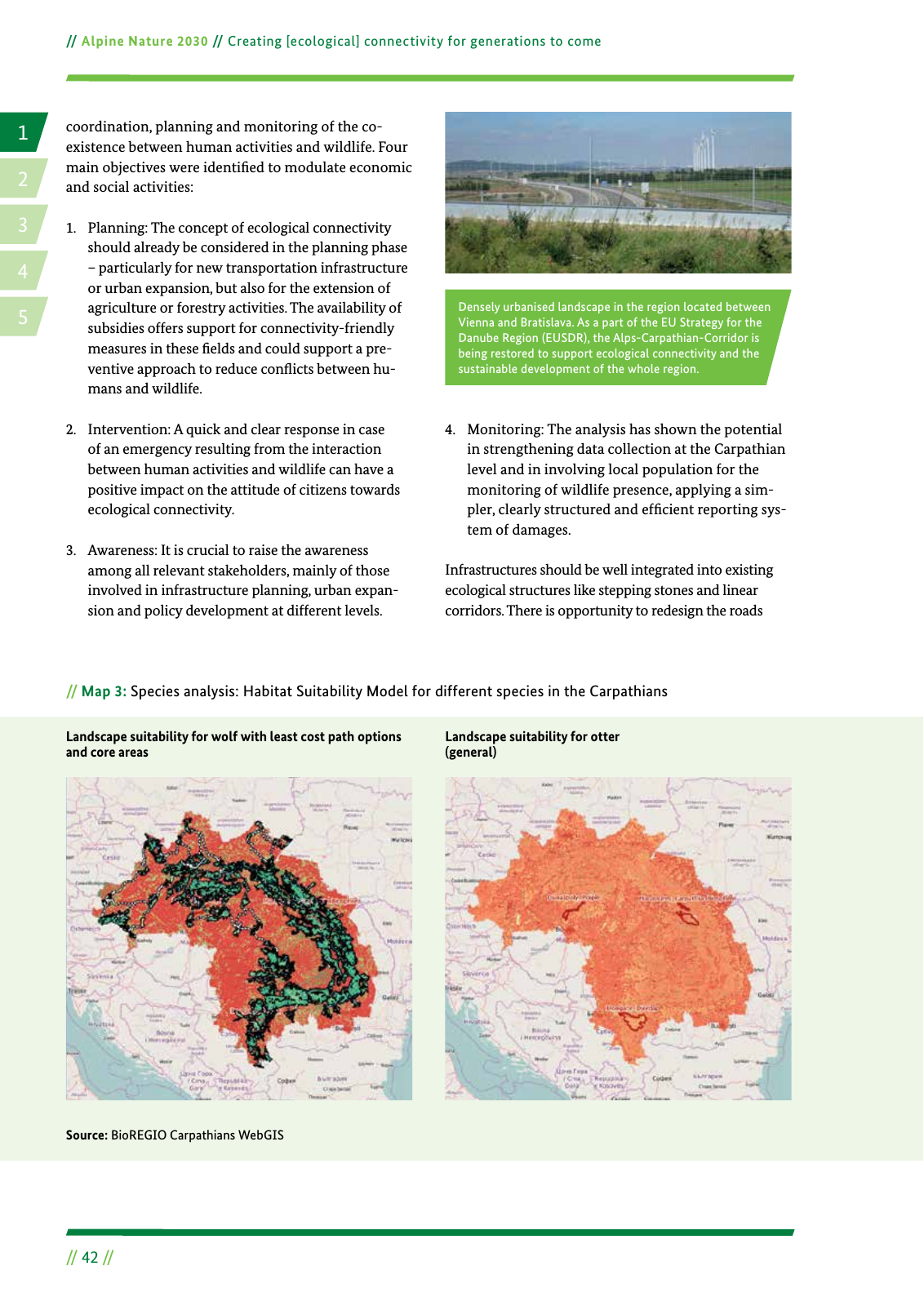14 2 5 3 42 Alpine Nature 2030 Creating ecological connectivity for generations to come coordination planning and monitoring of the co existence between human activities and wildlife Four main objectives were identi ed to modulate economic and social activities 1 Planning The concept of ecological connectivity should already be considered in the planning phase particularly for new transportation infrastructure or urban expansion but also for the extension of agriculture or forestry activities The availability of subsidies offers support for connectivity friendly measures in these elds and could support a pre ventive approach to reduce con icts between hu mans and wildlife 2 Intervention A quick and clear response in case of an emergency resulting from the interaction between human activities and wildlife can have a positive impact on the attitude of citizens towards ecological connectivity 3 Awareness It is crucial to raise the awareness among all relevant stakeholders mainly of those involved in infrastructure planning urban expan sion and policy development at different levels 4 Monitoring The analysis has shown the potential in strengthening data collection at the Carpathian level and in involving local population for the monitoring of wildlife presence applying a sim pler clearly structured and ef cient reporting sys tem of damages Infrastructures should be well integrated into existing ecological structures like stepping stones and linear corridors There is opportunity to redesign the roads Source BioREGIO Carpathians WebGIS Map 3 Species analysis Habitat Suitability Model for different species in the Carpathians Landscape suitability for wolf with least cost path options and core areas Landscape suitability for otter general Densely urbanised landscape in the region located between Vienna and Bratislava As a part of the EU Strategy for the Danube Region EUSDR the Alps Carpathian Corridor is being restored to support ecological connectivity and the sustainable development of the whole region

Hinweis: Dies ist eine maschinenlesbare No-Flash Ansicht.
Klicken Sie hier um zur Online-Version zu gelangen.
Klicken Sie hier um zur Online-Version zu gelangen.